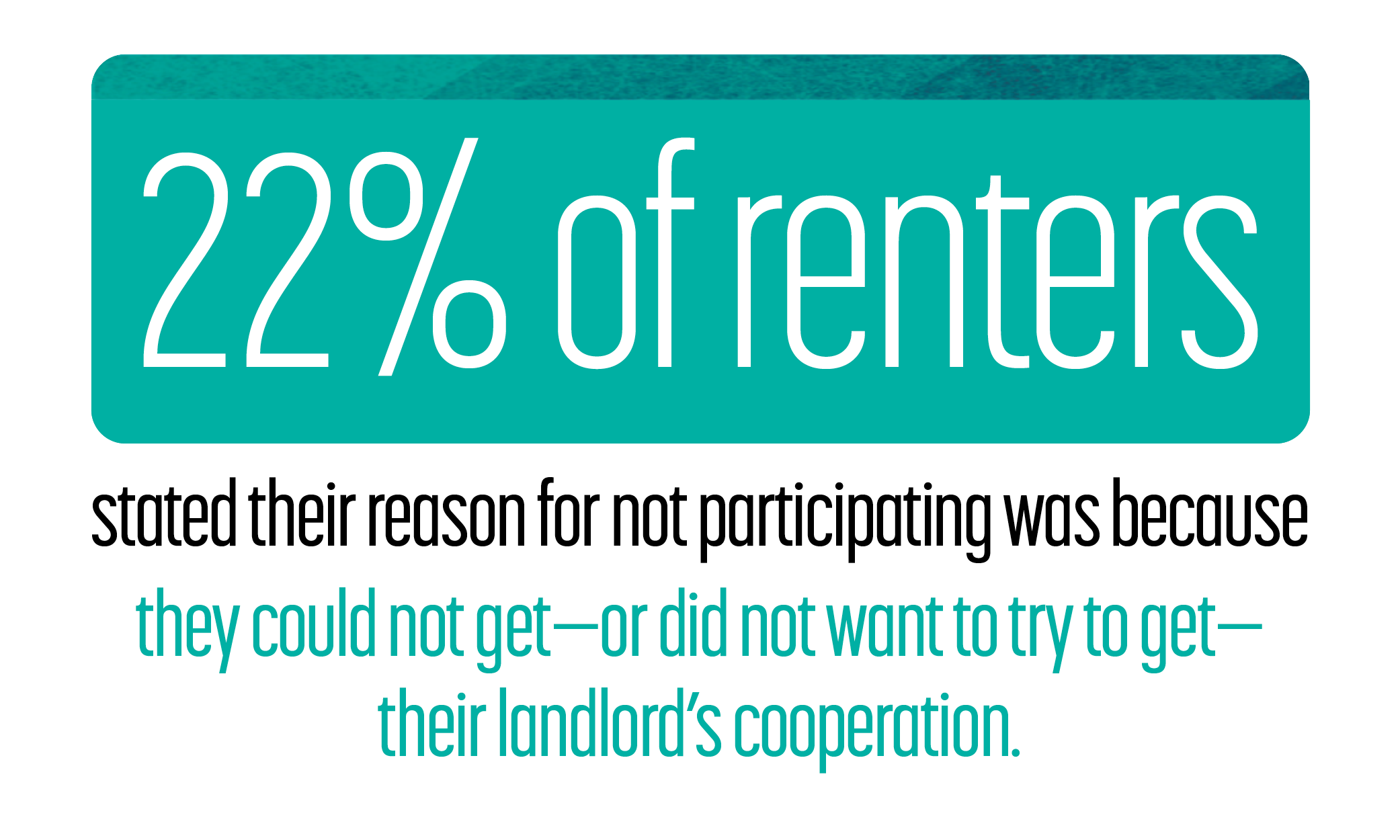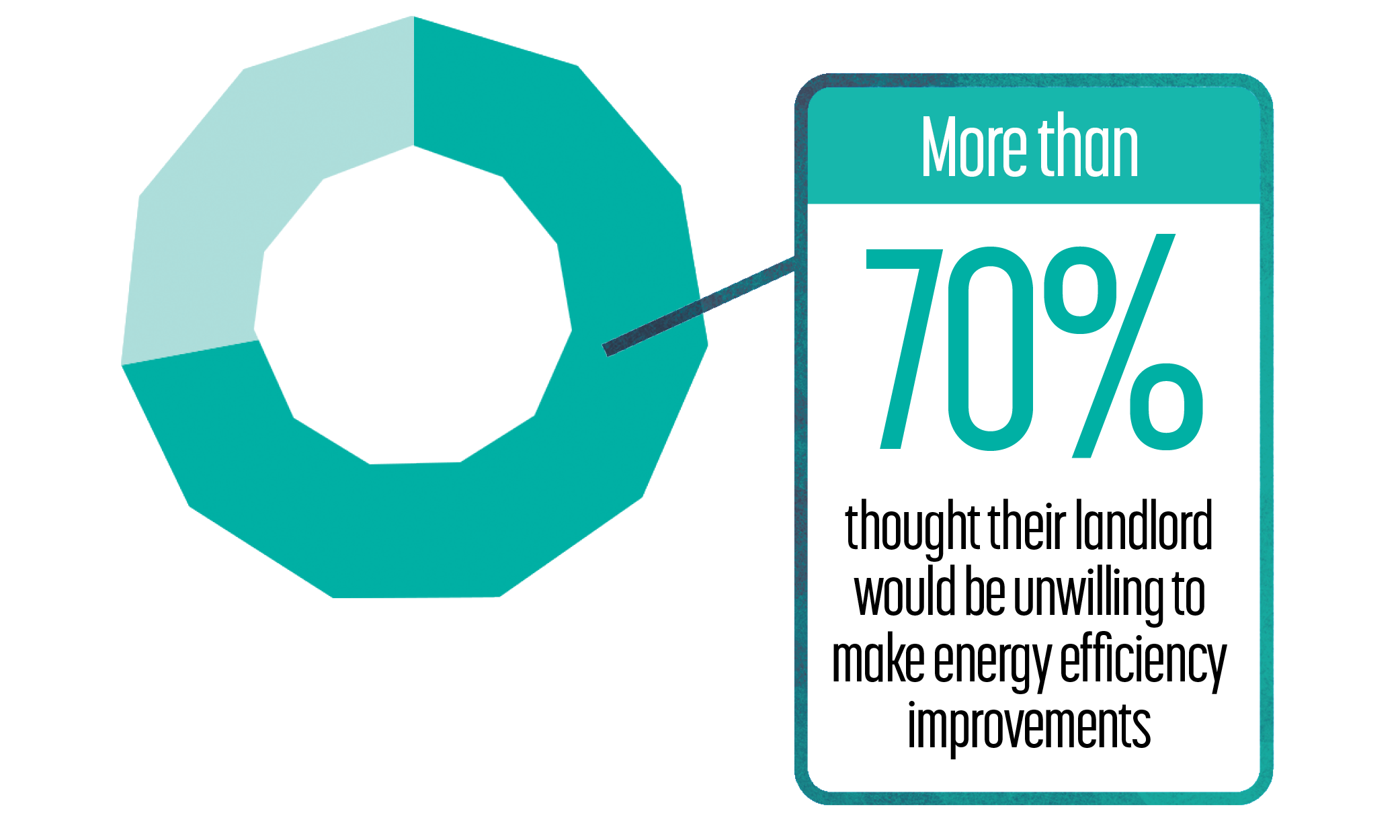 An ILLUME study reveals that homeowners are nearly 20% more likely than renters to be aware of their utility’s energy efficiency programs. ILLUME’s research team recently investigated the barriers to participation that renters, landlords, and property owners face and provided solutions to expand program access to more customers.
An ILLUME study reveals that homeowners are nearly 20% more likely than renters to be aware of their utility’s energy efficiency programs. ILLUME’s research team recently investigated the barriers to participation that renters, landlords, and property owners face and provided solutions to expand program access to more customers.
The Challenge
Between 2009 – 2020, a Northeast utility served 26% of their electric and 14% of their gas customers through their portfolio of residential energy efficiency programs. ILLUME was commissioned by the utility to conduct research on customers, with a particular focus on renters, that are not participating in their programs to understand the barriers to participation and how the utility might extend their reach and engage those customers more.
The Approach
ILLUME used a multi-pronged research approach to reach customers and learn the barriers to program participation, possible solutions to address those barriers, and identify the common characteristics of customer groups that are not participating, or are participating less in energy efficiency programs. The study used a balanced quantitative and qualitative approach to gather data and feedback from customers, landlords and property managers, program implementers, and community-based organizations to understand nonparticipants’ attitudes, needs, and perceptions about the utility and its programs.
The team attempted to reach as many sampled customers as possible to minimize nonresponse bias and capture the needs and characteristics of the full range of nonparticipating customers. Given the low participation among renters and the interest of the utility and stakeholders to increase participation among renters, the sampling plan was stratified based on those who rent vs. those who own their homes.
The Results

Our research found that being a renter, landlord, or property manager is a deterrent to participating in energy efficiency programs. In fact, 47% of renters that responded to the survey were not aware of the utility’s energy efficiency programs, do not understand who the programs are for, why their utility offers them, how to participate, or what benefits to expect from participation. Furthermore, being a renter decreases the possibility of knowing about these programs by almost 20%.

Renters and landlords/property managers face separate but related challenges to program participation. There can be a disconnect between renters and landlords/property managers and interviewees noted the “split incentive” barrier: when renters pay the heating or electrical bill, landlords perceive there is little benefit to spending money to make energy efficiency improvements to the property.
“Tenants don’t own the property and landlords don’t pay the energy bills so neither party is incentivized to put money into fixing bad weatherization measures, mold, old wiring, and cut down on energy bills.”
– State-level policy advocate
Renters shared with ILLUME’s research team that:
- they have fewer options for participation available to them;
- they tend not to want to attract the attention of their landlords and are therefore hesitant to contact them; and
- they fear being evicted or priced out of their homes.
Survey respondents who were renters reported not wanting to get their landlord’s cooperation as the most frequent reason for not participating (or looking into participating). In fact, more than 70% thought their landlord would be unwilling to make energy efficiency improvements.
Conversely, landlords and property managers noted facing challenges not only in timing upgrades but finding the time to plan for them because these are limited windows for them to make equipment changes for tenants. Most landlords and property managers we interviewed prefer to make changes when the units are unoccupied. Landlords and property managers are sensitive to any possible delays that participating in the program may cause to their renters moving in or out of a property.
“What the utility should do is explain why they want me to be energy efficient because to me it’s like well, doesn’t the utility just want me to spend more money on gas? Doesn’t the utility want me to be inefficient? So maybe it’s on them to explain why they support these programs. That would be interesting and helpful.”
-Alli, renter
The Takeaway
Our research revealed the key themes for addressing nonparticipation, specifically with renters, landlords, and property managers:
- Understanding: Work with contractors to promote the utility’s energy efficiency programs and rebate-eligible equipment.
- Transparency: Educate landlords and renters on the non-energy benefits of energy efficiency improvements to help motivate participation.
- Access: Provide straightforward, detailed program information for renters, landlords, and property managers through different communication channels, community events, and rental market and property management groups that will help foster relationships with rental property decision-makers.
- Value: Find ways to incentivize or recognize non-bill-payers for efficiency investments to help address the split incentive issue that renters and landlords/property owners face.
- Autonomy: Find ways to engage renters through education on tenant rights, provide measures that renters can do themselves, take with them to a future home, or support policy changes that grant renters the right to make efficiency improvements on their own. Develop a fast-track path for landlords to access rebates to make improvements to their rental properties during emergency replacements and within timelines that work for them.
